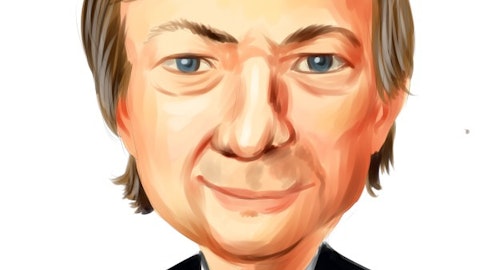Johnson & Johnson (NYSE:JNJ) reported a drop in sales and earnings for the second quarter of fiscal year 2015 on Tuesday, but still managed to beat Wall Street expectations on both counts. According to the firm, adjusted net earnings and diluted earnings per share for the quarter were $4.81 billion and $1.71 respectively, down by 6.3% and 3.9% year-over-year. Revenues stood at $17.79 billion, down by 8.8% compared to the second quarter of 2014. Analysts were expecting an EPS of $1.67 on revenues of $17.75 billion. Johnson & Johnson is pointing to the strong U.S dollar contributing to its slide in sales and profits. While international sales did fall drastically, by 14.3%, reflecting the negative currency impact of 14.8%, domestic sales also slumped by 2.4%. Sales to customers in nearly all segments except for consumer sales in the U.S. were down year-over-year. By geographic area, all sales for the second quarter experienced a decline. It should be noted, however, that Johnson & Johnson (NYSE:JNJ) has increased its adjusted earnings guidance for the full 2015 fiscal year to between $6.10 and $6.20 per share, excluding after-tax intangible amortization expense and special items. Alex Gorsky, chairman and chief executive officer, remained upbeat, saying in a statement that, “Our solid sales and earnings results in the quarter reflect the strong underlying growth we’re seeing across the enterprise.”

Niloo / Shutterstock.com
Nonetheless, Wall Street has reacted negatively to the Johnson & Johnson (NYSE:JNJ) slide in earnings and revenues, as the stock has fallen by 0.61% in morning trading to $99.69. Year-to-date, the stock has fallen by 4.86%. Hedge fund sentiment based on our database of over 700 hedge funds is slightly bearish. The value of shares collectively held by the funds we track decreased by 8.13% in the first quarter to $4.58 billion, though that was slightly attributable to the 3.8% share price decline in the first quarter. Meanwhile, 77 hedge funds had long positions in Johnson & Johnson (NYSE:JNJ) by the end of the first three months of the year, compared to 76 hedge funds at the end of the previous quarter.
Hedge funds and other big money managers tend to have the largest amounts of their capital invested in large and mega-cap stocks like Johnson & Johnson because these companies allow for much greater capital allocation. That’s why if we take a look at the most popular stocks among funds, we won’t find any mid- or small-cap stocks there. However, our backtests of hedge funds’ equity portfolios between 1999 and 2012 revealed that the 50 most popular stocks among hedge funds underperformed the market by seven basis points per month, showing that their most popular picks and the ones that received the bulk of their capital were not actually their best picks. On the other hand, their top small-cap picks performed considerably better, outperforming the market by 95 basis points per month. This was confirmed through backtesting and in forward tests of our small-cap strategy since August 2012. The strategy, which involves imitating the 15 most popular small-cap picks among hedge funds has provided gains of more than 135%, beating the broader market by over 80 percentage points through the end of April (see the details).
At Insider Monkey, we also follow company insiders to see whether these insiders have recently purchased or sold stock in their companies. This tells us if company insiders are willing to risk their money on their firm’s stock or whether they are cashing in. Director Charles Prince bought 2,500 shares of the company on June 2. However, Chief Scientific Officer Paulus Stoffels sold 187,250 shares on April 28.
Considering all of this, let’s check out the fresh hedgie activity surrounding Johnson & Johnson.
Hedge fund activity in Johnson & Johnson (NYSE:JNJ)
When looking at the hedgies followed by Insider Monkey, Fisher Asset Management, led by Ken Fisher, holds the biggest position in Johnson & Johnson (NYSE:JNJ). Fisher Asset Management has a $1.05 billion position in the stock made up of 10.46 million shares, comprising 2.1% of its 13F portfolio. The second-most bullish hedge fund manager is Donald Yacktman of Yacktman Asset Management, with an $848.3 million position in 8.43 million shares; the fund manager has 3.9% of his 13F portfolio invested in the stock. Other members of the smart money that hold long positions comprise Cliff Asness’ AQR Capital Management, Phill Gross and Robert Atchinson’s Adage Capital Management, and David E. Shaw’s D.E. Shaw & Co., L.P.
As aggregate interest increased, key hedge funds were leading the bulls’ herd. Hitchwood Capital Management, helmed by James Crichton, established the largest call position in Johnson & Johnson (NYSE:JNJ). Hitchwood Capital Management had $26.2 million invested in call options underlying 260,000 shares of company at the end of the first quarter. Gordy Holterman and Derek Dunn’s Overland Advisors also initiated a $15.1 million position of call options, underlying 150,000 shares. The other funds with new positions in the stock are Tony Chedraoui’s Tyrus Capital, Ken Gray and Steve Walsh’s Bryn Mawr Capital, and Peter Rathjens, Bruce Clarke and John Campbell’s Arrowstreet Capital.
Due to the overall bearish sentiment from hedge funds coupled with the slump in both revenues and profits for the just-ended second quarter, we don’t recommend a long position in Johnson & Johnson (NYSE:JNJ) now.
Disclosure: None




